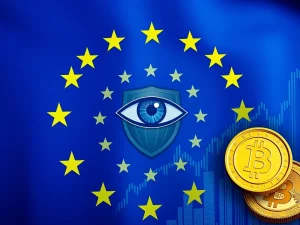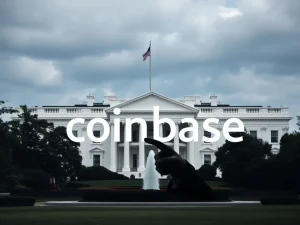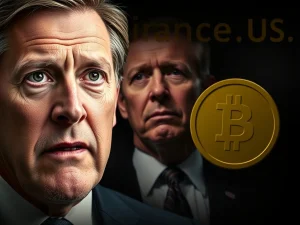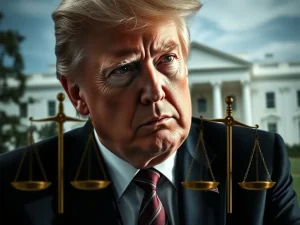SEC Issues Crucial Clarification: Tokenized Securities Remain Under Strict Regulation
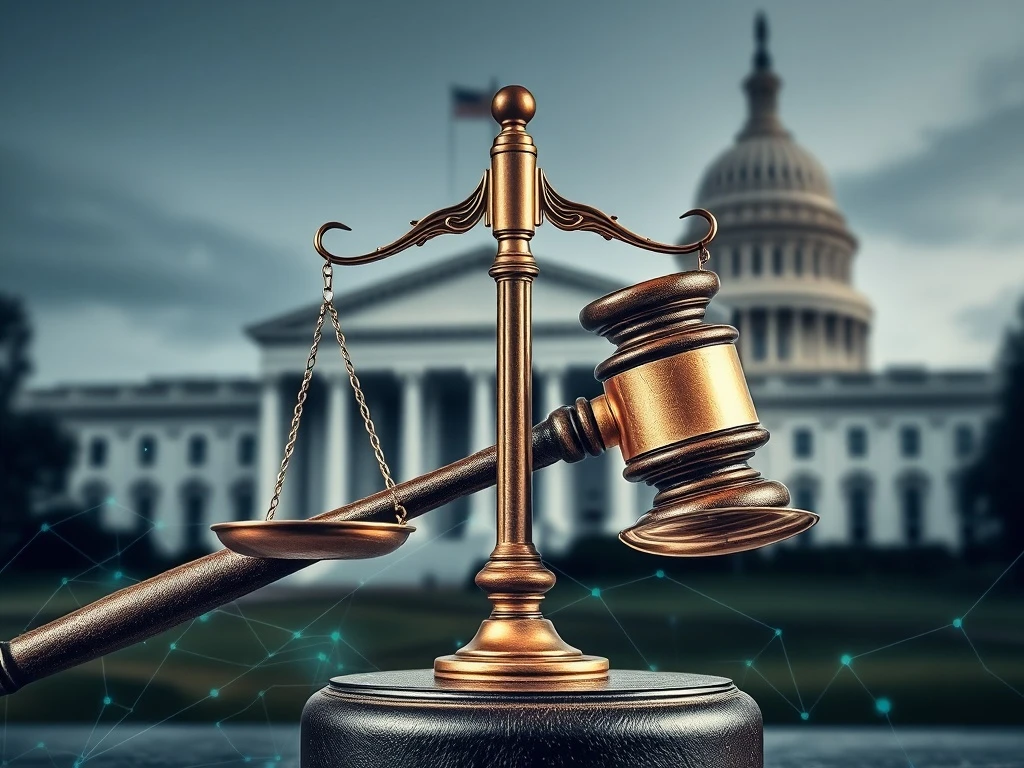
The cryptocurrency world is buzzing with a vital reminder from the US Securities and Exchange Commission (SEC). Commissioner Hester Peirce, often dubbed ‘Crypto Mom’ for her nuanced views on digital assets, has issued a clear statement that reverberates across the industry: ‘Tokenized securities are still securities.’ This declaration underscores the SEC’s unwavering stance on regulatory oversight, signaling to all market participants that innovation through blockchain technology does not exempt assets from existing federal securities laws. It’s a crucial clarification for anyone involved in or considering the burgeoning field of tokenized assets.
Understanding the SEC’s Stance on Tokenized Securities
SEC Commissioner Hester Peirce’s recent statement serves as a blanket warning and a call to action for companies exploring tokenized offerings. Her message is direct: simply putting an asset on a blockchain does not magically alter its fundamental nature or its regulatory classification. If an asset is a security in its traditional form, it remains a security when tokenized. This means that all federal securities laws, which govern everything from disclosure requirements to trading practices, apply equally to these digital representations.
Peirce emphasized the importance of engaging with the Commission and its staff. She urged ‘new entrants and many traditional firms […] embracing onchain products’ to discuss their potential tokenized offerings with SEC officials. This proactive approach aims to foster compliance and understanding, rather than relying on retroactive enforcement. The core principle is simple yet profound: the powerful capabilities of blockchain technology do not grant immunity from established legal frameworks.
Hester Peirce’s Warning: Are Your Blockchain Assets Compliant?
The timing of Commissioner Peirce’s remarks is notable, coming roughly two weeks after trading platform Robinhood launched a tokenization-focused layer-2 blockchain. While Peirce did not explicitly name Robinhood, her warning directly addresses the implications of such ventures. Robinhood’s strategy aims to offer tokenized US stocks and exchange-traded products to investors, particularly in Europe, demonstrating a clear move towards integrating traditional assets with blockchain technology.
For firms venturing into tokenization, the question of compliance is paramount. Peirce’s statement serves as a potent reminder that regulatory adherence is not optional. This echoes the sentiments of former SEC Chair Gary Gensler, who frequently encouraged companies considering crypto-related products that might be deemed securities to ‘come in and talk’ to officials. The consistent message from the SEC is clear: if you are dealing with a security, regardless of its technological wrapper, you must comply with the federal securities laws.
Navigating the Landscape of Crypto Regulation
The broader landscape of crypto regulation in the United States continues to evolve. While the SEC maintains its firm stance on tokenized securities, there are ongoing discussions and legislative efforts aimed at providing clearer ‘rules of the road’ for the digital asset industry. The current administration and the confirmation of SEC Chair Paul Atkins have hinted at a potential new direction for crypto policy, emphasizing a more collaborative approach.
Commissioner Peirce herself acknowledged that where ‘unique aspects of a technology warrant changes to existing rules or where regulatory requirements are outdated or unnecessary, we stand ready to work with market participants to craft appropriate exemptions and modernize rules.’ This indicates a willingness from the SEC to adapt, provided firms engage constructively and transparently. Robinhood’s reported submission of a proposal to the SEC in May for a framework to regulate tokenized real-world assets exemplifies this proactive engagement.
The Future of Blockchain Technology and Regulatory Frameworks
The push for clear regulatory guidelines is not just coming from the SEC; Congress is also actively involved. Republican lawmakers in the US House of Representatives have announced plans to advance legislation, specifically the Digital Asset Market Clarity Act. This proposed crypto market structure framework aims to clarify the distinct roles of the SEC and the Commodity F
utures Trading Commission (CFTC) in regulating digital assets within the US. Such legislation could provide much-needed certainty, fostering innovation while ensuring investor protection.
The ongoing development of these regulatory frameworks is critical for the mainstream adoption and long-term stability of blockchain technology. As more traditional financial institutions and tech companies explore tokenization, having clear guidelines will be essential for fostering trust and encouraging responsible growth. The convergence of traditional finance and distributed ledger technology demands a thoughtful and adaptive regulatory approach that balances innovation with oversight.
Why Every Market Participant Needs to Heed This SEC Guidance
The message from the SEC, particularly from a voice as respected as Hester Peirce, is a critical directive for anyone operating in the digital asset space. It’s a call for vigilance, transparency, and proactive compliance. Here are key takeaways for market participants:
- Assess Your Assets: Conduct thorough legal assessments to determine if your tokenized offerings qualify as securities under federal law. Do not assume tokenization changes the legal classification.
- Engage with Regulators: The SEC has explicitly invited dialogue. Proactively discussing your plans with the Commission and its staff can prevent future compliance issues and foster a more collaborative regulatory environment.
- Prioritize Compliance: Adherence to federal securities laws is non-negotiable. This includes requirements related to registration, disclosure, and trading rules.
- Stay Informed: The regulatory landscape for crypto regulation is dynamic. Keep abreast of legislative developments, such as the Digital Asset Market Clarity Act, and evolving guidance from regulatory bodies.
The ongoing dialogue between innovators and regulators is vital. As the ecosystem for tokenized securities expands, ensuring that these advancements occur within a robust and compliant framework is paramount for protecting investors and maintaining market integrity. The SEC’s message is a reminder that while blockchain technology offers immense potential, it operates within an existing legal universe that demands respect and adherence.
In conclusion, Hester Peirce’s clarification is a foundational principle for the future of digital assets. ‘Tokenized securities are still securities’ is not merely a statement; it’s a guiding light for responsible innovation in the blockchain space. Companies embracing this technology must integrate legal compliance into their core strategy, recognizing that the path to widespread adoption is paved with adherence to established regulatory norms. The collaborative efforts between industry and government, coupled with clear legislative action, will ultimately shape a robust and secure future for tokenized assets.

